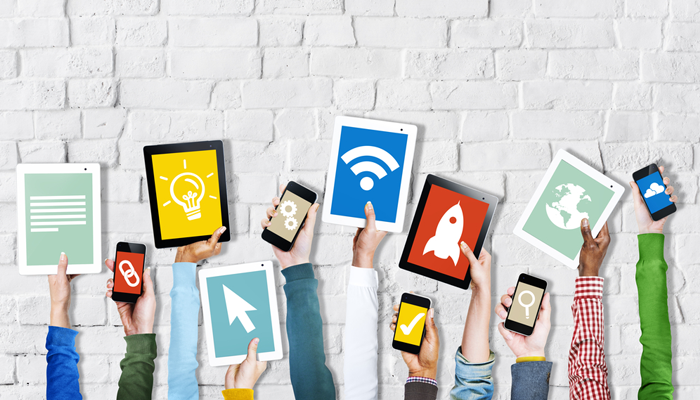IMDEA Networks

Putting underused smart devices to work
A new market idea to optimize device usage comes into play
17 September 2018

There are currently millions of heavily underutilized devices in the World. The storage, networking, sensing and computational power of laptops, smartphones, routers or base stations grows with each new version and product release. Why not put all those extra gigabytes of memory and those powerful processing units to work collaboratively and expand the services available to all of us?
According to Moore’s law —which states that computer power doubles every two years at the same cost— we are likely to continue being able to buy products that keep getting ever better and more useful. For most of us that means mostly going for exponential growth in speed and storage capacity, but the reality is that the plethora of capabilities of our devices goes largely underused. Researchers at IMDEA Networks are exploring this opportunity at our technological fingertips with the development of the novel «DisCoEdge» system, which aims to transform our conception of device ownership to improve current utilities and create new services.
DisCoEdge aims to spread heavy computational tasks and large storage over many simple devices at the “edge” of the Internet (e.g. using your home router) or using people’s hand-held or portable smart devices. This groundbreaking idea opens the possibility of a new market that private and business users may join in as if it were a social network marketplace, where it will possible to buy or sell the partial use of personal or industry devices to store information, run a program, mine data, etc. This may enable novel applications such as commuters working cooperatively to download and share entertainment content on the go, corporate storage systems (similar to Dropbox or Google Drive) that use workers’ smartphones and laptops, or home devices that share disk space for caching videos and music.
“The system aims for energy and cost efficiency. There will be no need to access a cellular network or use WiFi for the system to operate, since people’s devices could also talk to each other using device-to-device communications now commonly available in smartphones, such as Bluetooth,” explains Vincenzo Mancuso, one of the two investigators leading the project. “However there is a need for an entity to coordinate and make secure sharing possible among a set of not-necessarily trustable machines. Here is where blockchain technology comes into play, as this technology will allow us to build a distributed, transparent and cooperative infrastructure to track transactions between users”.
The most important challenge addressed by this initiative is that devices belonging to either people or companies must dynamically and securely share and access various computational resources available in their vicinity (e.g., WiFi islands, home network deployments, trusted devices forming a personal or community cloud and even 5G-and-beyond mobile radio networks). This requires developing a polyvalent interface and new secure protocols, since one has to account for the presence of free-riders or even attackers and malicious users that could hinder the performance of the system or try to steal valuable personal and business information.
“We know that for participation in this revolutionary market to appear worthwhile to businesses and private owners we must put in place a system of incentives and rewards,” adds Antonio Fernández Anta, the other project architect. “The key idea behind DiSCoEdge is not to generate a market of free agents, but rather a platform that acts as a market broker, an intermediary, and provides guarantees. In our vision, the broker makes transactions transparent and traceable thanks to the adoption of innovative blockchain concepts.”
In this collaborative scenario, the everyday person can fully exploit investments in powerful, usually expensive, technological equipment, while smart home devices (including smart TVs and appliances) able to run edge and fog computing applications will see their usability enhanced. DisCoEdge will also offer network operators another market opportunity in the sale of the capability of their expensive telecommunication systems in a flexible way that encompasses not only communication but also generic storage and computational power.
DisCoEdge is a project funded by the Spanish Ministry of Science, Innovation and Universities, which will be carried out in full by IMDEA Networks’ scientists. The project focuses on the emerging concepts of “fog/edge computing”, “nearby communications” and “blockchain”.
Resources:
Per-Olov Östberg, James Byrne, Paolo Casari, Philip Eardley, Antonio Fernández Anta, Johan Forsman, John Kennedy, Thang Le Duc, Manuel Noya Mariño, Loomba Radhika, Miguel Ángel López Peña, José López Veiga, Theo Lynn, Vincenzo Mancuso, Sergej Svorobej, Anders Torneus, Stefan Wesner, Peter Willis, Jörg Domaschka (Junio 2017)
Reliable Capacity Provisioning for Distributed Cloud/Edge/Fog Computing Applications [PDF  496 Kb]
496 Kb]
In: The 26th European Conference on Networks and Communications (EuCNC 2017), 12-15 June 2017, Oulu, Finland.
Antonio Fernández Anta, Chryssis Georgiou, Kishori Konwar, Nicolas Nicolaou (June 2018)
Formalizing and Implementing Distributed Ledger Objects [PDF  615 Kb]
615 Kb]
ACM SIGACT News. 49 (2). pp. 58-76. ACM New York, NY, USA. ISSN 0163-5700.


Recent Comments